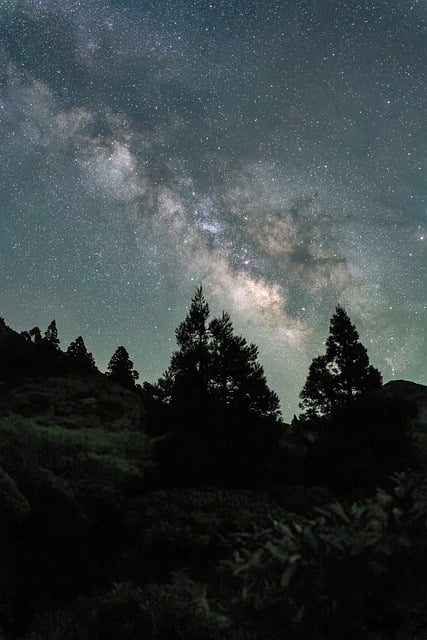[ez-toc]
A Cosmic Tapestry: The Origin and Evolution of the Universe
The universe, a vast and enigmatic expanse, holds within its depths countless mysteries that have captivated humankind for millennia. From the twinkling stars that dot the night sky to the swirling galaxies that populate the cosmos, the universe presents an awe-inspiring spectacle that ignites our curiosity and compels us to seek answers to fundamental questions about our existence.
At the heart of our quest to comprehend the universe lies the question of its origin. How did this magnificent tapestry of celestial bodies come into being? What forces shaped its evolution? To unravel these profound mysteries, we must delve into the realm of cosmology, the study of the origin, evolution, and structure of the universe.
We also Published
- Coordinated Lunar Time: A New Time System for the Moon – NASA
NASA is developing a new time system for the Moon, Coordinated Lunar Time (LTC), to ensure precision for future missions. Learn about the challenges of timekeeping on the Moon, Einstein’s theory of relativity, and the global collaboration needed for this groundbreaking initiative. - Earth’s Distant Future: A Glimpse into Our Planet’s Fate – Exploring the Cosmic Timeline
Explore the captivating story of a distant planet orbiting a white dwarf, offering a glimpse into Earth’s potential future. Learn how this discovery unveils the dramatic evolution of stars and their influence on planetary systems, including our own. - A Short History of Botany: Tracing the Roots of Plant Science
Discover the evolution and milestones in A Short History of Botany. Explore how plant science has transformed over centuries.
The Big Bang: A Cosmic Explosion
The prevailing scientific theory that explains the universe’s origin is the Big Bang theory. This theory postulates that the universe began as an infinitely dense and hot point, known as a singularity. Approximately 13.8 billion years ago, this singularity underwent a rapid expansion, a cosmic explosion known as the Big Bang.
The Big Bang was not an explosion in the traditional sense, where matter expands outwards from a central point into a pre-existing space. Instead, it was an expansion of space itself. Imagine a balloon being inflated; as the balloon expands, the points on its surface move further apart. Similarly, in the Big Bang, space expanded, carrying matter along with it.
Cosmic Inflation: A Rapid Expansion
The initial expansion of the universe, as described by the Big Bang theory, was incredibly rapid. However, a period of even faster expansion, known as cosmic inflation, occurred in the first fraction of a second after the Big Bang. During this inflationary epoch, the universe expanded exponentially, growing from an incredibly small size to a vast expanse.
Cosmic inflation is a key feature of the Big Bang theory, as it helps explain several observations about the universe, such as its flatness and homogeneity. A flat universe implies that parallel lines will never meet, while a homogeneous universe is uniform on a large scale.
The Formation of Galaxies and Stars
As the universe continued to expand and cool, the primordial soup of particles that emerged from the Big Bang began to coalesce into larger structures. These structures, known as galaxies, are vast collections of stars, gas, dust, and dark matter held together by gravity.
Within galaxies, stars are born from the collapse of giant molecular clouds. These clouds are composed primarily of hydrogen and helium, the most abundant elements in the universe. As a cloud collapses under its own gravity, its density increases, and the temperature rises. Eventually, the core of the cloud becomes so hot and dense that nuclear fusion ignites, releasing tremendous amounts of energy and creating a star.
Evidence for the Big Bang
The Big Bang theory is not just a theoretical construct; it is supported by a wealth of observational evidence. One of the most compelling pieces of evidence is the cosmic microwave background (CMB) radiation.
The CMB is a faint glow of radiation that permeates the entire universe. It is the afterglow of the Big Bang, redshifted to microwave wavelengths due to the expansion of the universe. The CMB has a nearly uniform temperature, further supporting the idea of a homogeneous early universe.
Another piece of evidence is the redshift of distant galaxies. As galaxies move away from us, the light they emit is stretched, causing its wavelength to shift towards the red end of the spectrum, a phenomenon known as redshift. The greater the distance to a galaxy, the greater its redshift, confirming the expansion of the universe.
Ongoing Research and Mysteries
While the Big Bang theory provides a comprehensive framework for understanding the universe’s origin and evolution, there are still many unanswered questions. For example, we do not fully understand the nature of dark matter and dark energy, which are thought to constitute the majority of the universe’s mass and energy.
Moreover, the origin of the primordial fluctuations that seeded the formation of galaxies and stars remains a mystery. Scientists are actively investigating these and other questions using advanced telescopes, satellites, and computer simulations.
The Cosmic Tapestry Unfolds
The story of the universe’s origin and evolution is a tale of cosmic grandeur, from the explosive birth of the Big Bang to the intricate tapestry of galaxies and stars that populate the cosmos. It is a story that continues to unfold, revealing new insights and sparking further curiosity about the vast and enigmatic universe we inhabit.
| Key Evidence | Description |
|---|---|
| Cosmic Microwave Background (CMB) Radiation | A faint glow of radiation that permeates the entire universe, the afterglow of the Big Bang. It has a nearly uniform temperature, supporting the idea of a homogeneous early universe. |
| Redshift of Distant Galaxies | The light emitted by distant galaxies is stretched, causing its wavelength to shift towards the red end of the spectrum. The greater the distance to a galaxy, the greater its redshift, confirming the expansion of the universe. |
| Abundance of Light Elements | The abundance of light elements like hydrogen and helium in the universe is consistent with the predictions of the Big Bang theory. |
| Feature | Description |
|---|---|
| Cosmic Inflation | A period of rapid expansion in the first fraction of a second after the Big Bang, explaining the flatness and homogeneity of the universe. |
| Dark Matter and Dark Energy | Mysterious substances that make up the majority of the universe’s mass and energy, their nature and origin are unknown. |
| Primordial Fluctuations | Tiny variations in the density of the early universe that seeded the formation of galaxies and stars, their origin remains a mystery. |
 
RESOURCES
- Origin and Evolution of Universe
- Origin and Evolution of the Universe (docx)
- Origin and Evolution of the Universe
- Origin and Evolution of the Universe: Evidence for Design?
- KGS–A Kansan’s Guide to Science–History
- Origin of the Universe, History, Evolution, Theories, Facts
- Formation of the Universe | History, Theories & Timeline
- 8.1: Origin of the Universe
- Formation and Evolution of the Universe
- The Evolution of the Universe
- Big Bang Theory – Origin of Universe







0 Comments